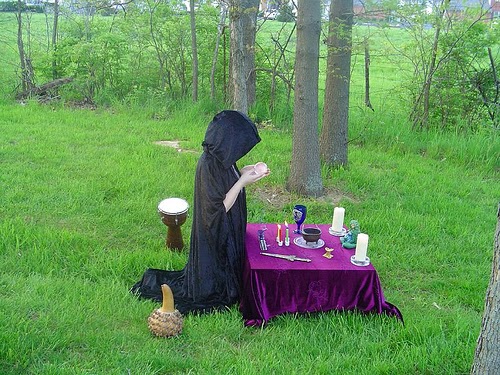 Clothing is fiber and textile material
worn on the body. The wearing of
clothing is mostly restricted to human beings and is a feature of nearly all
human societies. The amount and type of
clothing worn is dependent on physical stature, gender, as well as social and
geographic considerations.
Clothing is fiber and textile material
worn on the body. The wearing of
clothing is mostly restricted to human beings and is a feature of nearly all
human societies. The amount and type of
clothing worn is dependent on physical stature, gender, as well as social and
geographic considerations.
Physically, clothing serves many purposes: it can serve as protection from
the elements, and can enhance safety during hazardous activities such as hiking
and cooking. It protects the wearer from
rough surfaces, insect bites and prickles by providing a barrier between the
skin and the environment. Clothes can
insulate against cold or hot conditions. Further, they can provide a hygienic barrier,
keeping infectious and toxic materials away from the body.
Humans began wearing clothes roughly 83,00 to 170,000 years ago. There is no easy way to determine when
clothing was first developed, but some information has been inferred by
studying lice. The body louse
specifically lives in clothing and diverged from head lice about 170,000 years
ago, suggesting that clothing existed at that time.
In most cultures, gender differentiation of clothing is considered
appropriate for men and women. Some sumptuary
laws regulate what men and women are required to wear. Islam requires women to wear more modest forms
of attire, usually hijab. In Western
societies, skirts, dresses and high-heeled shoes are usually seen as women's
clothing, while neckties are usually seen as men's clothing. Although a growing trend does include men
wearing the high heels and women wearing the bowties.
Religious clothing is sometimes worn during the performance of religious
ceremonies. It may also be worn everyday
as a marker for special religious status. For example, Muslim men wear unstitched cloth
pieces when performing religious ceremonies. The unstitched cloth signifies unified and complete
devotion to the task at hand, with no digression. Islam, Judaism and Christianity
all have something in their Holy Books and belief structures about covering the
head, especially females. Sikhs
men wear a turban as part of their religion.
The US Pentagon has approved
a new policy that will allow troops to seek waivers to wear religious clothing,
seek prayer time or engage in religious practices. Jewish troops can seek a waiver to wear a
yarmulke or Sikhs can seek waivers to wear a turban and grow a beard. Defense officials say the waivers will be
decided on a case-by-case basis and will depend on where the service member is
stationed.
For Pagans, there is no set clothing code.
Some may use their culture as a guide or their path and ancestors. Others may just mix it up. It’s entirely up to you what you wear. The important thing to remember is that your
spirituality is not defined by what you look like on the outside. Coloring your hair black and wearing fairy
wings doesn't make you Pagan, any more than wearing sensible shoes would make
one a Christian.
Your belief system and practice is something that comes from the inside. But there are many ways to express your path
on the outside. For many people jewelry,
such as wearing a pentacle, is not only a method of personal expression, it's
also a way of signaling to other people in the community that you have
something in common.
Jewelry is the most common
but there are also special robes some people may wear. Many wear a robe or some other clothing made
of natural materials while participating in group activities and go skyclad (nude)
when observing rites alone or with their mate.
Some covens walk a skyclad path so check the group out first to see the
options. Donning the ritual robe is a way of stepping into the ritual, leaving the everyday for the magical world. Some people wear nothing under their ritual robe. Most groups and circles allow
blue jeans, robes, ribbons in the hair, jewelry, t-shirts or any other mixed
options the person sees fit to wear.
 Lately, Pagan woman have
been covering their head for religious reasons.
Most women who veil also dress modestly.
It is a way to show devotion to your deity and it is symbolic for only
allowing your spouse to see your body.
Lately, Pagan woman have
been covering their head for religious reasons.
Most women who veil also dress modestly.
It is a way to show devotion to your deity and it is symbolic for only
allowing your spouse to see your body.
Like Goddess Hestia, only
family and a chosen few, those whom respect and love, shall be permitted to see
the tresses. In keeping the hair hidden,
they protect their energy and ward off the envious eye of others, along with
their potential ill wishes. When in the
ritual circle, they will wear their hair free and unbound as a sign of will.
Many religious groups have
developed cultural norms with regard to dress. Dress codes, both formal and
informal, exist as a means of showing group identity. Members of religious groups actively
construct their own lives and use dress symbolically to express religious
beliefs, adaptation to social change, and the conformity to social norms and
religious authority.
Be, and dress, who
you are and be happy about it!













